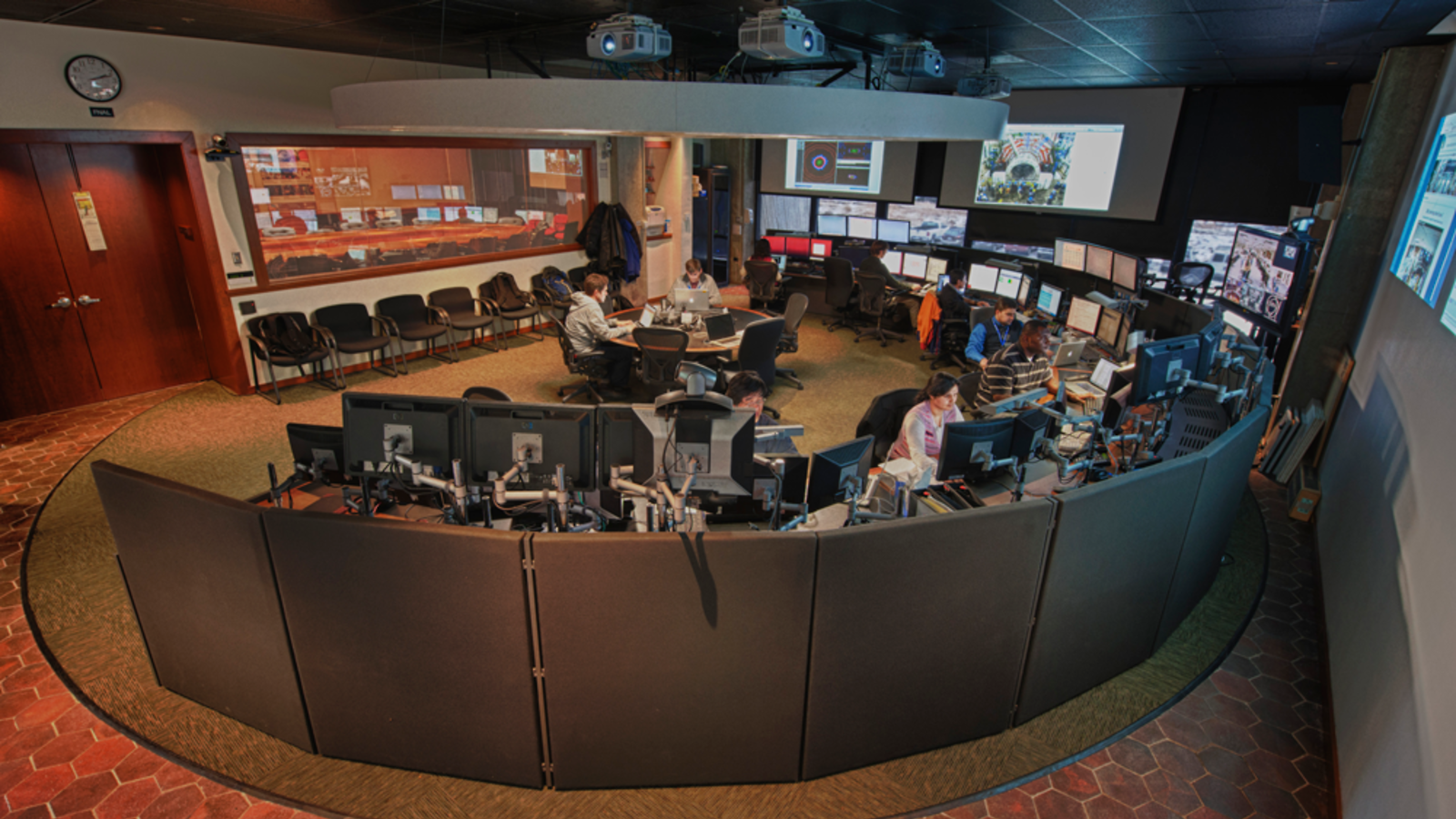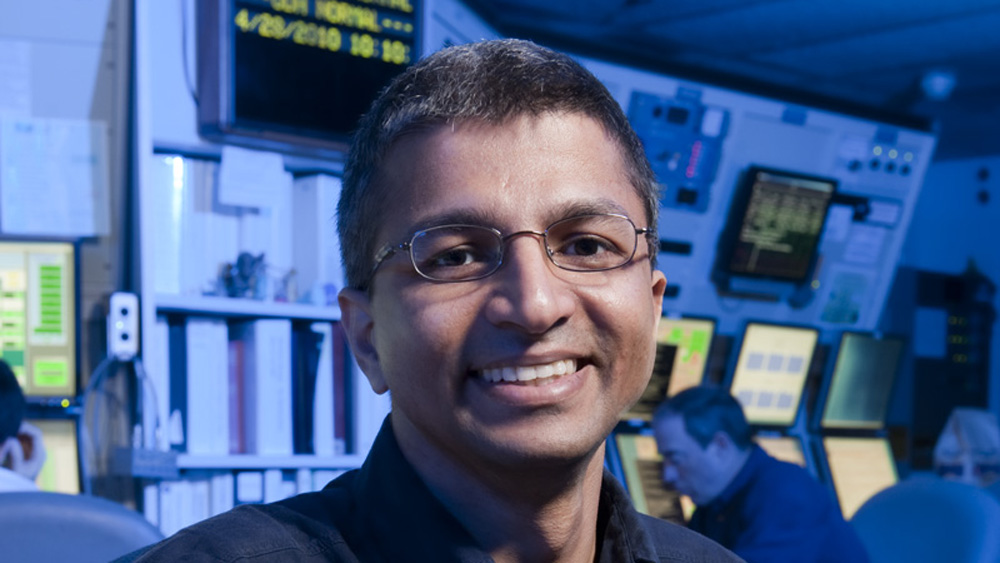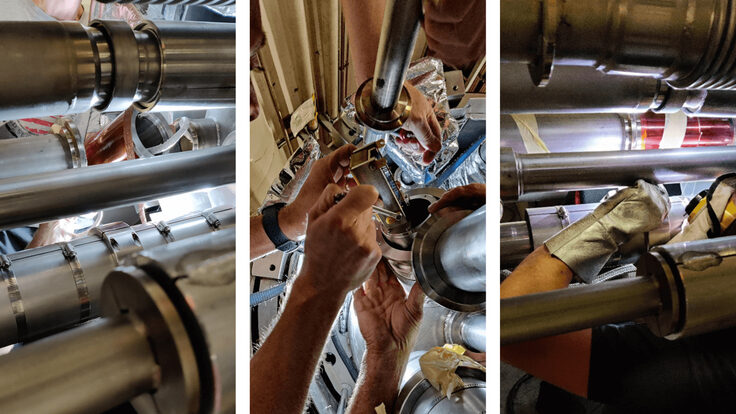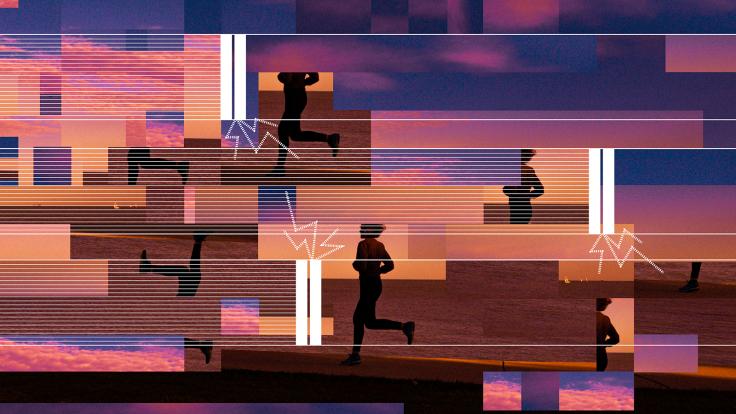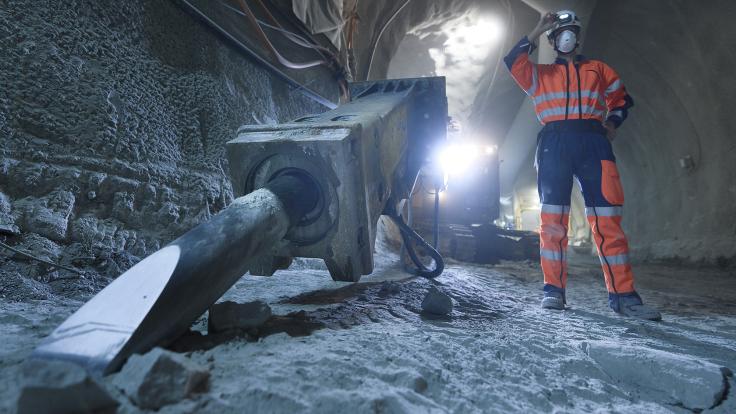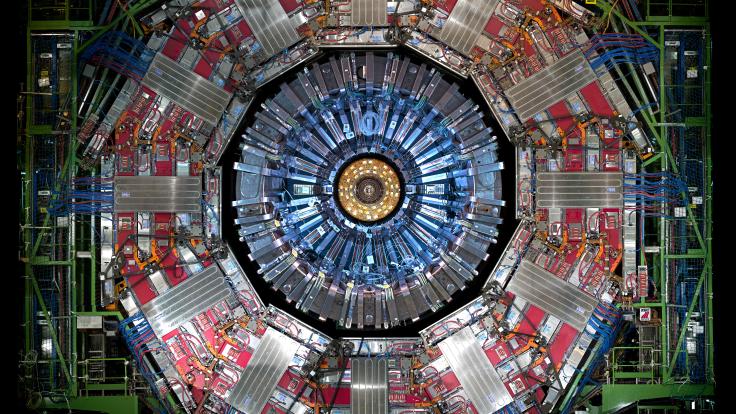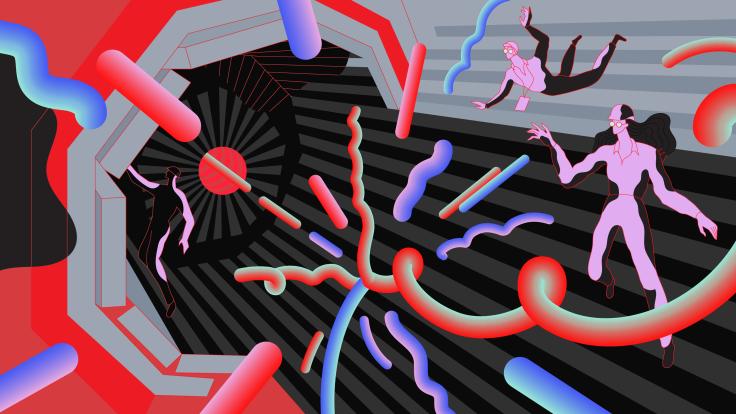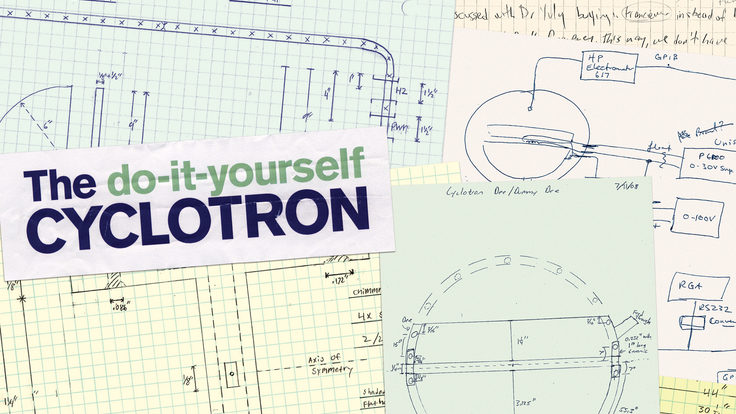Physicist Sam Hewamanage woke up, got ready and made his usual 15-minute drive to work. He parked his car, walked inside and sat at his workstation before digging into his primary task for the day: monitoring a particle detector located 100 meters underground on the border of Switzerland and France.
Hewamanage (pictured below) doesn’t live in Europe. He lives in Batavia, Ill., just outside of Chicago. But he can work on the CMS experiment at the Large Hadron Collider as if he were on the CERN campus, thanks to the Remote Operations Center at Fermilab.
The ROC at Fermilab has allowed more than 100 people to log nearly 3000 hours of shifts for the CMS experiment this year alone, making hands-on experience much more accessible for people who don’t have the opportunity to travel overseas. They will complete upward of 1000 more hours before the LHC goes into a long shutdown in February.
“It is very different from learning about the detector by reading the manual,” says Hewamanage, a Florida International University postdoc.
The ROC is located on the first floor of Fermilab’s iconic Wilson Hall. It’s a big room built to mirror the CMS control center at CERN, with several workstations and monitors displaying the conditions in the CMS detector. Scientists and students connect to the control room at CERN via a live feed, so workers can converse with their colleagues across the ocean in real time.
Shifts are carefully divvied up to give as many collaborators as possible a chance to contribute. In a year and a half, Hewamanage has logged around three weeks in the ROC.
“There are a lot of people who come stay for a week or two weeks and do their shift and go back to their institutions,” Hewamanage says. “The main goal is that everyone contributes.”
CMS scientists take care of core tasks such as operating the detector at the experiment's main control room, located in France at a location named for its position on the LHC ring, “Point 5.”
However, “the Point 5 control room is relatively small, and we have more than 3000 physicists on the CMS experiment," says Fermilab physicist Kaori Maeshima. “It is difficult to have all the experts physically located at Point 5, to run the 24/7 data taking operation. It is very important that we can contribute effectively from remote locations."
So the ROC has an essential role to play. Before physics data is analyzed, physicists need to know it is reliable. Those working in the ROC are in charge of determining whether the components of the CMS detector are working well enough to output good data. If the data checks out, they certify it can be used for later analysis.
In addition to the large CMS center at Fermilab, there are two others on the CERN main site in Switzerland and at the DESY laboratory in Germany. CMS also has more than 50 smaller CMS centers around the world. These allow physicists to remotely monitor CMS operations and, in some cases, to complete shifts remotely.
Scientists operating ATLAS, the other large multi-purpose detector at the LHC, made the decision not to have ROCs in favor of keeping all operations in a single room. This decision was primarily motivated by the fact that the ATLAS control room, in contrast to the CMS control room, is already in close proximity to the CERN campus. However, ATLAS collaborators are able to monitor data from anywhere in the world, and several member institutes have constructed their own specialized monitoring stations. In addition, one of the other LHC experiments, ALICE, installed its inaugural remote monitoring center last year in India.
CMS physicist Lucas Taylor, who was the project manager during the construction of the ROC at CERN, says it made sense to base a ROC at Fermilab because of the United States' expertise in computing and the HCAL—a component of the CMS detector that measures the energy of particles. Spreading the workload also makes life a lot easier for physicists at CERN.
Thanks to the time difference, “they can easily cover the night shift in the US, which is a huge benefit to us,” Taylor says. “We do fewer night shifts than would otherwise be necessary.”
For Fermilab physicist Aron Soha, it is just natural that Fermilab and CERN would be closely connected.
“The ties between the two labs have been strong for a long time,” Soha says. “Having a center that serves as a link between the two sites is really an important part of the program here.”



